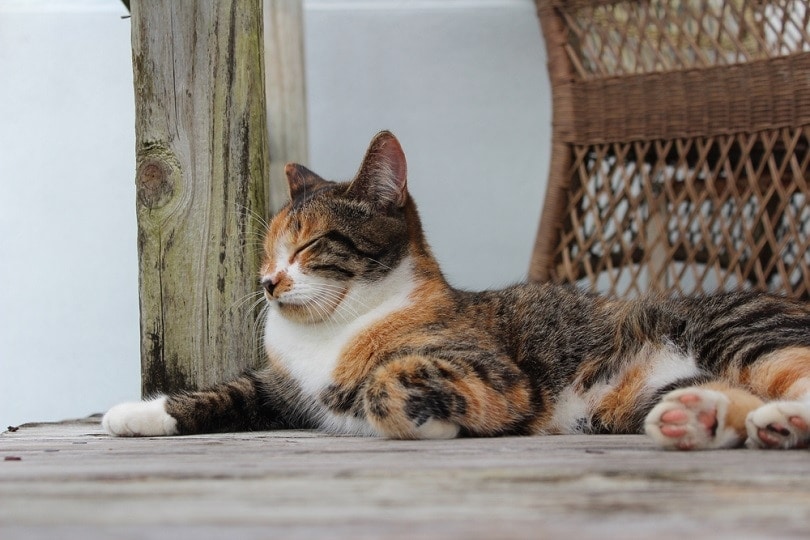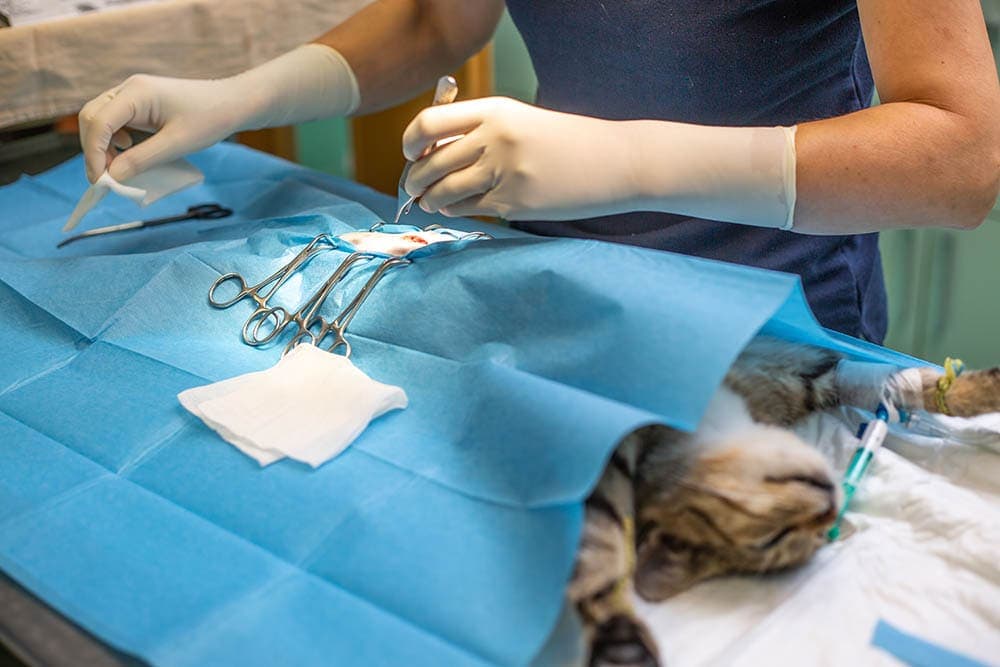How to Tell What Breed Your Cat Is? Our In-Depth Identification Guide with Infographic

Updated on
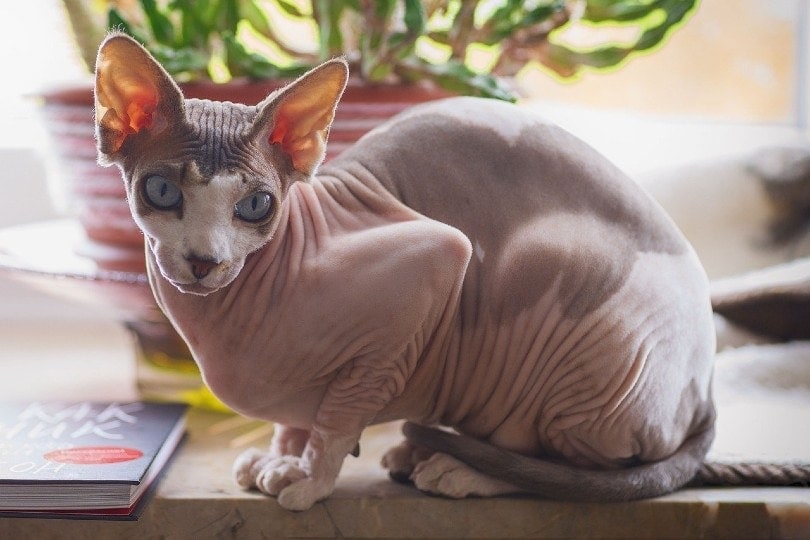
Click to Skip Ahead
While it is nearly impossible to tell what breeds your cat is mixed with unless you give them a DNA test, some traits can help you narrow it down. While there are much too many breeds and associated traits to list, we have broken what to look for to help you make an educated guess. The main ways to tell can be broken down into the following groupings:
How to Determine Your Cat’s Breed (Infographic)
Fur Pattern
There are six varieties of fur patterns in cats. These coat varieties are the direct result of genetics and different pedigree breeds recognize specific coat patterns and colors as a breed standard.
Tabby
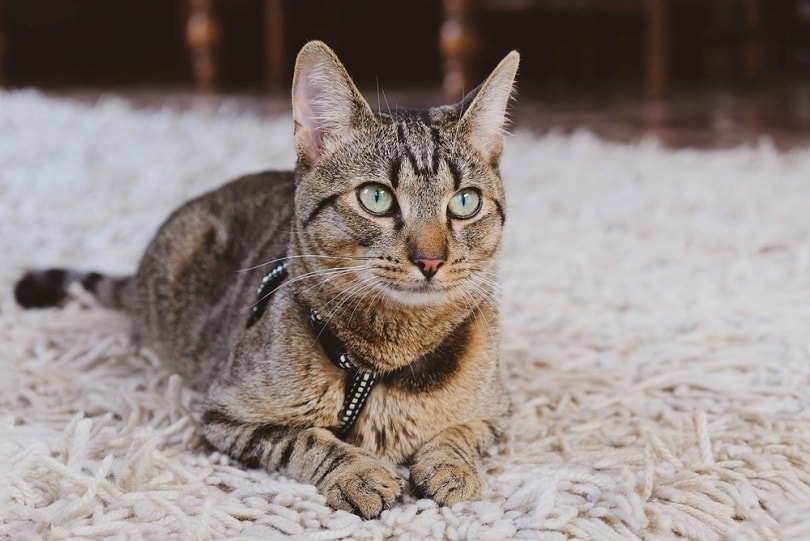
Tabby is the most common pattern coat pattern in cats. Within the Tabby coat pattern, there are four main varieties.
Classic Tabby
The classic Tabby pattern also referred to as the blotched tabby, is made up of swirls that resemble a target on each side of the cat.
Mackerel Tabby
Mackerel Tabby cats will have rings around their tails and legs with bands of solid or broken stripes around the rest of their bodies.
Spotted Tabby
The Spotted Tabby has bands of spots. These spots can vary in size and can resemble broken stripes that are similar to those of a Mackerel Tabby.
Patched Tabby
Patched Tabbies have patches of dark coloration and patches of red or orange with the Tabby pattern throughout both colors. This variety is referred to as Tortoiseshell Tabbies because the display of brown and orange spots are like those seen on actual tortoise shells.
Ticked Tabby
Also known as the Abyssinian Tabby are sometimes mistaken as not being Tabbies at all. Their faces and legs will be the telltale for this variety, as the tabby pattern is typically only present in these areas. They will have an agouti coat and sport a signature “M” shape on their head.
Solid
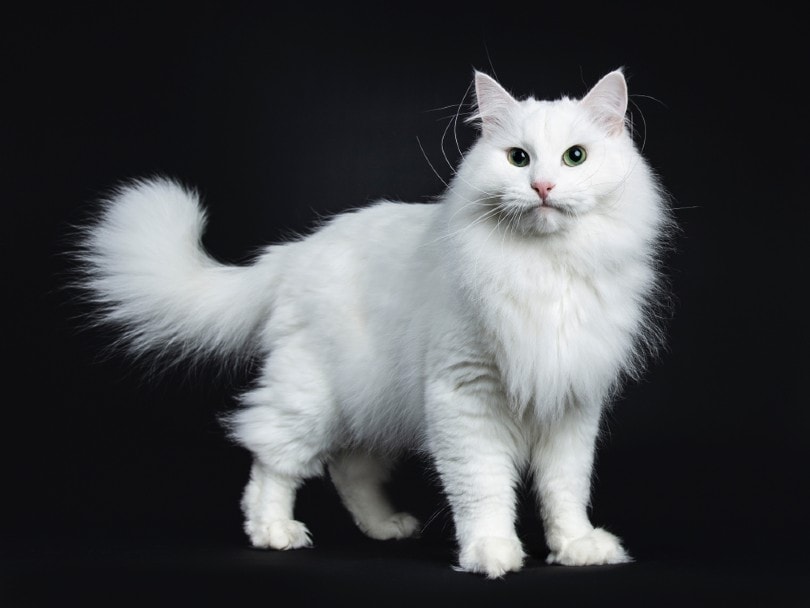
The word solid speaks for itself. There can only be one color present on the cat’s body for a cat to fit into the solid color category.
Bicolor
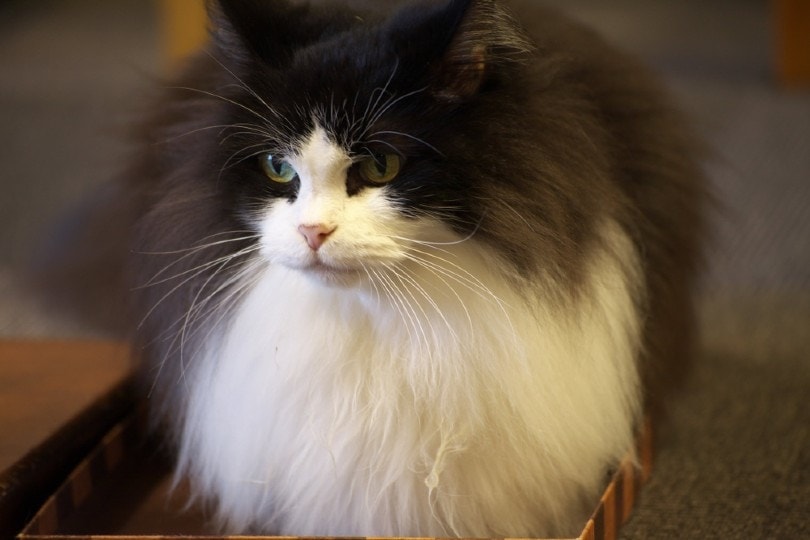
Bicolor cats display a fur coloration of white and one other color. This fur pattern is extremely common amongst mixed-breed cats.
Tricolor and Tortoiseshell
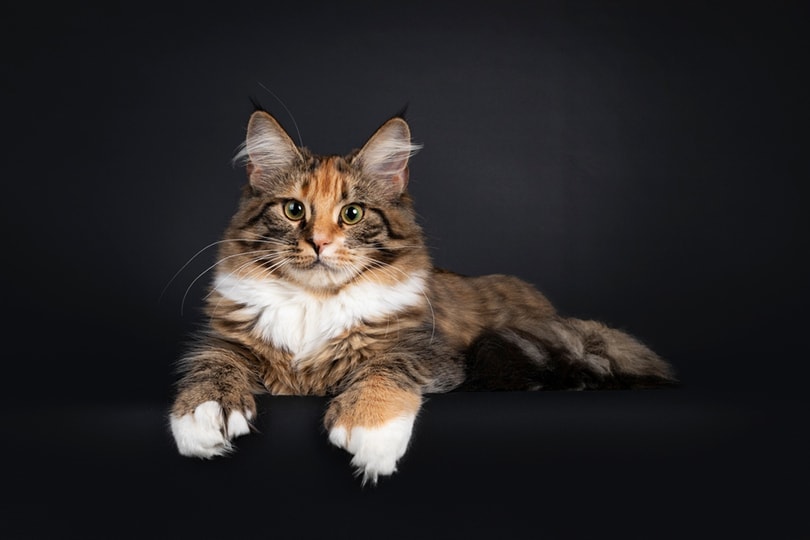
Tortoiseshell cats are characterized by a mixture of black and red fur. The red fur ranges in hue from reddish to light orange. They can also be found with the more diluted colors like creams and blues.
Tricolor cats are more commonly referred to as Calico. They also display the same mixture of the Tortoiseshell but also have white mixed in. Interestingly, most Tortoiseshell and Calico cats are female. The genetic codes found for the black and red fur colors are found within the X chromosome. That does not mean they cannot be male; it is just much rarer.
Colorpoint
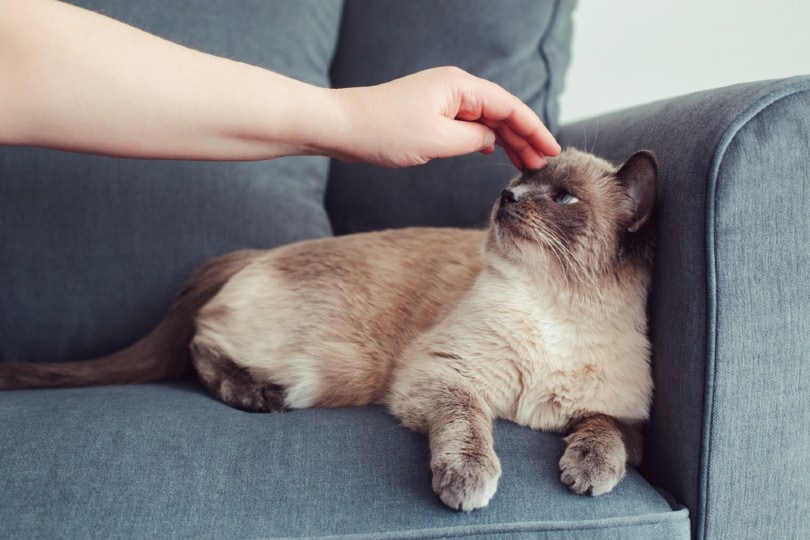
Colorpoints are identified by the dark coloration on their faces, paws, and tails, in contrast to the rest of their body, which is lighter in color. Siamese, Himalayan, and Ragdoll cats are some great examples of Colorpoint.
Colorpoint is one of the rarer color patterns that was the result of a genetic mutation. That same mutation leads to temperature-sensitive albinism and blue eyes.
Length of Fur
Most mixed-breed cats are identified as either Domestic Shorthair, Domestic Medium Hair, or Domestic Longhair. Nearly 90% of mixed-breed cats in the United States alone are considered Domestic Shorthairs. Medium-haired cats have double-coated fur, while Domestic Longhairs have full, thick, and long coats of fur, and tend to be larger than other breeds.
Long-Haired Cats
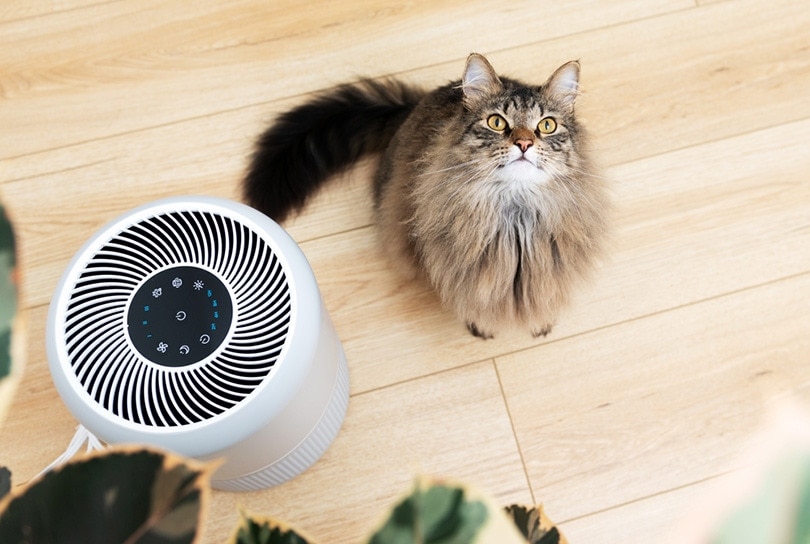
Long-haired cats will have a long, flowy coat that is typically the same length all over the body. They also have tufts of hair in the ears and majestic manes. Long-haired cats require more frequent grooming to keep their coats from becoming tangled and matted.
Medium-Haired Cats
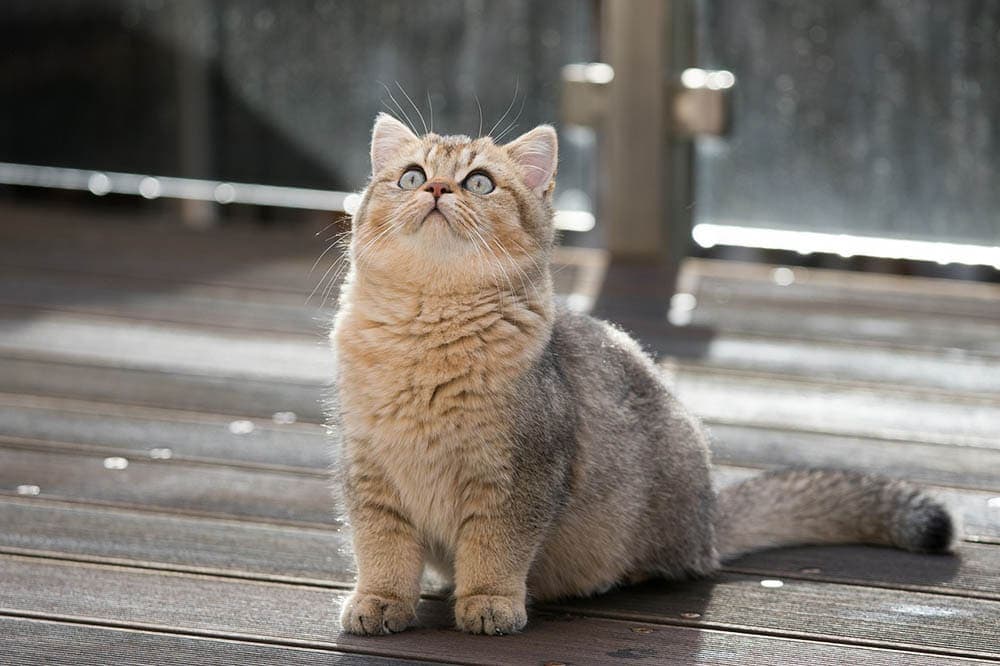
Medium-haired cats typically have shorter hair along their backs, but the rest of their coat will have a more fluffy and slightly longer appearance.
Short-Haired Cats
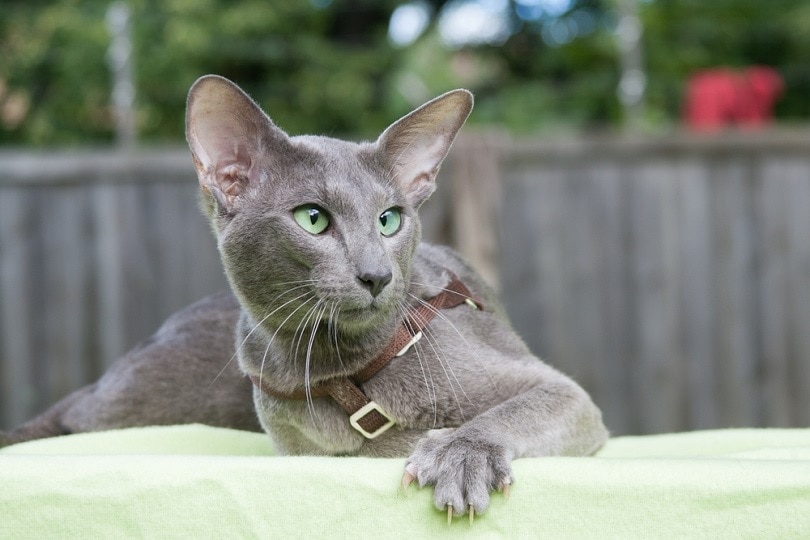
The most common type of cat is the short-haired cat. Their coats do not grow any longer than 1.5 inches in length. They are the most low-maintenance cats in terms of grooming.
Curly-Haired Cats
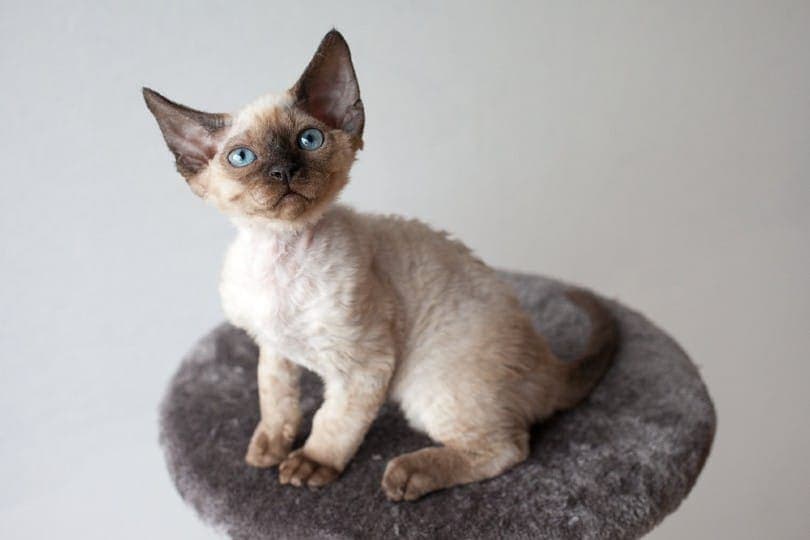
Curly-haired cats are very rare and are the result of a genetic mutation. This mutation is recessive and is only found in a few cat breeds, like the Devon Rex. If you have a curly-haired cat, it will be much easier to narrow down their breed ancestry due to the rarity.
Hairless Cats
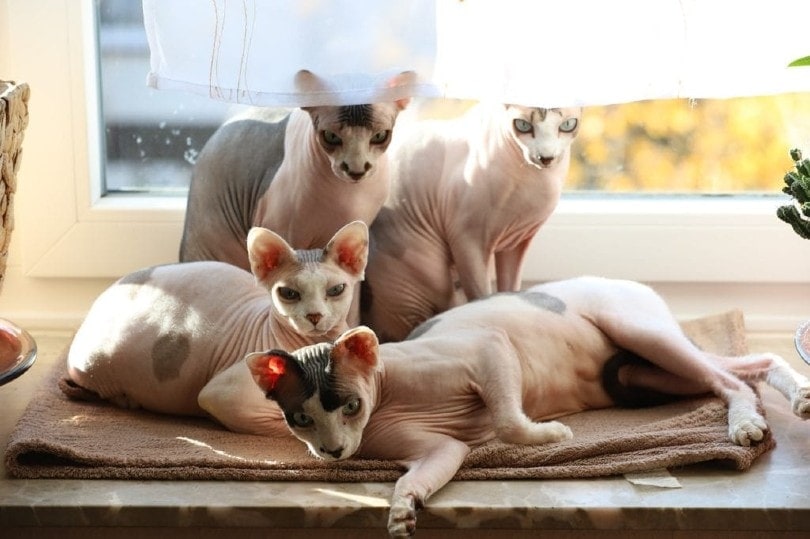
We cannot forget about the hairless cats. They may not be everyone’s cup of tea, but these beloved bald beauties stand out against the rest. Hairlessness is also the result of a naturally occurring genetic mutation. The most well-known hairless cat breed is the Sphynx, which was created by crossbreeding short-haired cats with those that were hairless.
Eye Shape and Eye Color

Ears
Ear shape can also help you determine a cat’s breed history. Some cat breeds have very specific ear characteristics. For instance, the American Curl has distinct curled ears, the Scottish Fold has flattened ears that are folded forward and downward, and the Maine Coon, among many others, has what are called lynx tips, or ear tufts.
Face Shape
Different cat breeds have different face shapes. The flat-faced, brachycephalic cats such as the Persian, Himalayan, and Burmese are distinctly different from the elongated, narrow faces of the Oriental Shorthair. While many other cat breeds have a more typical-looking face shape, seeing the more unique facial traits in an individual can help narrow down the breed possibilities.
Tail
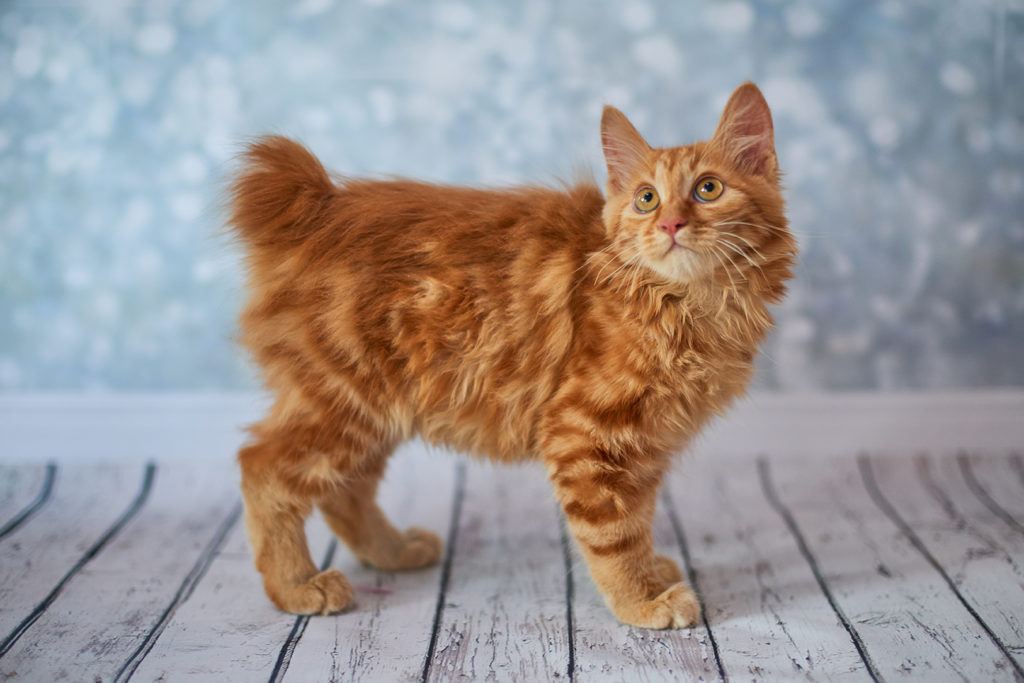
While the tail length may not be the best indicator, some breeds have unique tails, such as the American Bobtail, with its short tail that is only about one-third the length of a normal tail and has the “bobbed” appearance, hence the name.
Personality Traits
Narrowing down your cat’s breed by personality will be a much harder challenge. Mixed breeds cats get traits from their breed ancestry and that leaves endless possibilities in terms of personality traits. That being said, many pedigree cat breeds are known to have very distinct personality traits
DNA Testing
DNA testing is getting increasingly popular. There are many different varieties of DNA test kits for dogs on the market but there are also a few that are made specifically for cats. Keep in mind that not all cat DNA tests can yield the same results, so it is important to check what types of information can be gathered from each test you consider.
If you are looking into what specific breeds make up your beloved feline family member, you need to opt for a test that can test for specific breeds. In addition, a lot of these tests will also help you determine possible genetic health conditions, specific traits, and much more.
DNA testing is the only definitive way to prove what breed of cat you have unless you have purchased a purebred or hybrid cat from a reputable breeder who knows the lineage of their cats.
Conclusion
Other than having your cat’s DNA tested with a test designed to check specifically for breed ancestry, there is no definitive way to tell your cat’s breed. Without the DNA test, the best you can do is make an educated guess based on your cat’s characteristics. You can even get your veterinarian involved for their expert opinion.
See also:
- Manx Cat vs American Bobtail Cat: Key Differences (With Pictures)
- Cat Communication 101: Cat Body Language & Meowing
Featured Image Credit: Igor Lukin, Pixabay




